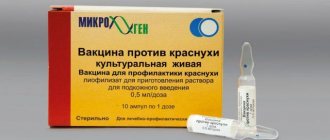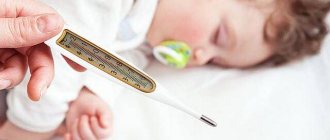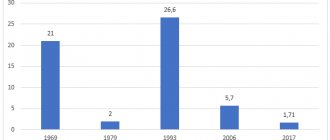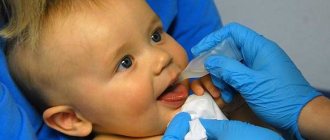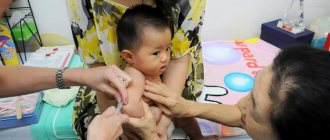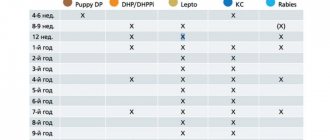Pharmacodynamics and pharmacokinetics
It should be noted that the ADS-M vaccination means: diphtheria-tetanus toxoid in small doses. It is also a variation of the DTP vaccine , but without the pertussis component.
The basis of the vaccine is a mixture of substances that have undergone special treatment. They do not cause severe toxic reactions or infectious diseases, but form an immunological reaction. It is this reaction that is the basis of the principle of action of this vaccination, thanks to which stable immunity to tetanus and diphtheria .
This vaccine is used for revaccination in adult patients and children aged 4-6 years who previously received the DPT vaccine. Therefore, in this case, the ADSM vaccination does not so much build immunity as maintain the level of antibodies at the required level.
Also, this drug is intended for children with intolerance to the pertussis component, which is contained in DTP and ADS vaccinations, for the purpose of emergency immunization, for example, according to epidemic indications.
Where to get vaccinated
Routine vaccination is carried out free of charge at the clinic at the place of registration or work. The referral is given by the therapist after checking the patient for possible contraindications. Vaccination is also done in private clinics.
The advantages of this option: you can choose a domestic or foreign drug, the doctor visits your home.
Not all clinics offer the latter service, and it is paid separately. The cost depends on the type of drug:
- ADSM vaccination for adults and children with domestic composition - 300-700 rubles;
- vaccination with Imovax DT Adult, DT Vax – 800-1000 rub.
Indications for use
Vaccination with ADS-M for children over 6 years of age and adult patients is recommended as a prophylaxis against diphtheria and tetanus.
This vaccine is also indicated for adult patients over 18 years of age with:
- primary vaccination;
- carrying out systematic revaccination against diphtheria and tetanus. The vaccine contains a reduced dosage of diphtheria toxoid to reduce the risk of developing possible hypersensitivity reactions;
- the threat of tetanus due to injury.
Preparing for vaccination
Vaccination, like any other medical procedure, should be taken seriously and prepared for it in order to minimize the risk of adverse reactions. Both children and adults should limit their visits to crowded places several days before ADSM is performed to avoid possible contact with a patient with diphtheria or tetanus.
Immediately before the procedure, it is necessary to empty the intestines and bladder naturally. It is better to do the vaccination on an empty stomach, so it is not recommended to eat 12 hours before vaccination.
How to prepare a child for vaccination?
A healthy child does not need special preparation for vaccination. The main measures are to prevent him from coming into contact with a sick child or adult. The introduction of new foods to the diet or a sudden change in climate before scheduled vaccination can also negatively affect the child’s immunity.
It is recommended to measure the baby’s morning and evening temperatures within 3-5 days before vaccination and check whether they correspond to the norm. If a child is prone to allergies, you should consult a pediatrician before vaccinating him with ADSM.
Side effects
This drug is characterized by low reactogenicity, but the likelihood of adverse reactions should not be excluded.
It has been established that the side effects of vaccinations in adults and children can be general or local. They usually appear within 1-2 days from the moment of administration.
Local reactions include: redness, induration, loss of sensitivity and swelling at the site where the vaccine is given.
Common side effects are: fever , moodiness, lethargy, loss of appetite and digestion.
The appearance of such symptoms after vaccination is considered normal and does not require treatment, although the use of Ibuprofen or Paracetamol . Experts also recommend drinking plenty of fluids.
Severe complications of ADS-M vaccination occur infrequently, but they can manifest themselves as anaphylactic shock, Quincke's edema, encephalitis, and meningitis.
Rules of conduct after vaccination
For the first half hour, it is advisable for the patient to remain in the clinic under the supervision of a doctor. Then you can go home. It is advisable to limit contact with other people for 2-3 days.
It is prohibited to visit places with large crowds of people - shopping centers, clubs. It is also better not to visit school, work or college, and not to visit guests.
Doctors advise the patient to rest more during these 2 days and follow the following recommendations:
- Drink more fluids.
- Avoid strong physical and mental stress.
- Protect yourself from drafts and hypothermia - immunity is unstable.
- Wash without immersing the injection area in water. You can take a shower only a day after vaccination, but carefully. Swimming is prohibited for a week.
- Do not visit saunas, steam baths, or dive into public bodies of water until local symptoms pass: lump, swelling.
- Do not try new dishes with unfamiliar ingredients. If an allergy to them occurs, it will be difficult to differentiate it from a reaction to the vaccine.
- Do not heat the injection site, do not rub, do not scratch: suppuration may occur.
- If there is severe pain in the injection area (a symptom of an inflammatory reaction), apply ice to the area. Consult your doctor for the use of any ointments and other local remedies.
- Unpleasant post-vaccination symptoms can be eliminated with medications. Children and adults are allowed to bring down the temperature with antipyretics (Paracetamol, Ibuprofen) if it is above 38 degrees. You can take analgesics, medications for diarrhea and nausea.
- If fever, headaches, or weakness persist 4-5 days after vaccination, see a doctor. This may indicate ARVI and other infections that require treatment.
Vaccine ADS-M instructions for use (Method and dosage)
As the instructions for the ADS-M vaccine show, it is administered intramuscularly. A suitable place for its insertion in children is the anterolateral part of the thigh, under the shoulder blade or in the shoulder area.
Revaccination of children is performed at 14-16 years of age and its effect lasts for 10 years.
After 10 years, adult patients are vaccinated with ADS-M, which will help maintain immunity at the required level against tetanus and diphtheria. Then revaccinations are carried out at 10-year intervals. However, no upper age limit has been established.
Vaccination ADSM R2 and R3
R - revaccination is the repeated administration of a vaccine in order to continue the effect of active immunity against diphtheria and tetanus.
The first revaccination is carried out at one and a half years with DTP. Starting from the age of four, a child cannot become infected with whooping cough, so continuing to administer pertussis toxoid is pointless and even harmful. Therefore, the second and third revaccinations are carried out using ADSM.
Revaccination at 7 years
R2 ADSM is carried out for each child at 6-7 years of age, before coming to school. This is due to the fact that when joining a new team and coming into contact with many children and adults, the risk of infection is very high. A child's immunity at this age is not strong enough to resist infections such as diphtheria and tetanus.
Revaccination at 14 years of age
R3 ADSM is necessary, since within 8-10 years after the second revaccination, immunity to diphtheria and tetanus practically disappears.
14-16 years of age is the height of puberty, when the child’s body is rebuilt under the influence of sex hormones. During such stress, it is important to have strong immune protection, which will be provided by timely revaccination. In addition, after finishing school, children again end up in new groups, and the risk of infection increases.
Revaccination between the ages of 16 and 26 is important to strengthen immune defenses during pregnancy.
special instructions
Intravenous injection into the buttock is unacceptable, as this may damage the sciatic nerve or blood vessels.
Carrying out immunosuppressive treatment or having an immunodeficiency can reduce the intensity of the immune response to the vaccine. Therefore, it is necessary to complete the therapy or ensure complete safety for the patient. Vaccinations can be given to people with chronic immunodeficiency when a concomitant disease does not prevent the formation of even a small level of antibodies.
Vaccine composition
ADS-M consists of toxoids of pathogens. These substances are toxins produced by the pathogen and rendered harmless. When toxoids enter the body, the immune system is activated and antibodies begin to be produced.
ADS-M includes the following components:
- diphtheria toxoid – 5 units;
- tetanus toxoid – 5 units;
- aluminum hydroxide;
- thiomersal;
- formaldehyde.
The product is packaged in 1 ml ampoules. In DTP, the diphtheria component is present in a single dose in the amount of 60, tetanus - 20 units. ADS-M contains significantly less toxoids.
Therefore, this vaccination is easier to tolerate. It is given to those people in whom higher concentrations of toxoids cause adverse reactions, weakened and premature babies.
Analogs
Level 4 ATC code matches:
Diphtheria-Tetanus toxoid
Tetanus toxoid
There is an imported vaccine Imovax D.T.Adult , which is better tolerated and does not lead to the development of unwanted reactions.
There are also monovalent vaccines , that is, separately for diphtheria - AD and tetanus - AS.
Difference between DTP and ADS-M
There are great similarities between DPT and ADS-M vaccinations. But DTP additionally contains a component that is directed against whooping cough.
ADS-M vaccination is recommended for adult patients and children over 4 years of age for vaccine administration or revaccination, since for this age a disease such as whooping cough is no longer dangerous.
However, in children under 4 years of age, everything is completely different - whooping cough is not only a dangerous disease, but can also be fatal. This disease can develop at lightning speed. And if an adult may have a prolonged cough, then in children a spasm of the respiratory muscles may occur, leading to a sudden stop in breathing. Only immediate resuscitation measures will help save life.
Contraindications to vaccination
There are practically no obstacles to the administration of the vaccine, except for elevated temperature. For mild colds, you can vaccinate immediately after the temperature has stabilized. Moderate and severe acute respiratory viral infections - wait 2 weeks to restore the immune system.
It is recommended to vaccinate adolescents with chronic diseases under the strict supervision of a doctor during the period of remission. DPT should be replaced with another drug if hypersensitivity to the constituent proteins is detected. It is strictly forbidden to vaccinate children after receiving a blood transfusion or taking medications that affect the functioning of the immune system.
Reviews of the ADS-M vaccine
One of the most discussed topics on parenting and medical forums is vaccination. According to some parents, vaccinations are a necessity, and they find it strange that anyone would even doubt it. Others believe that vaccinations are dangerous to health and the body as a whole. Therefore, disputes about them can continue endlessly.
It should be noted that reviews of the ADS-M vaccine are quite common. They are largely related to the body’s reaction to vaccination. Patients often report experiencing unwanted symptoms after the procedure. For example, some are concerned about pain and an increase in temperature up to 38 degrees. In this case, the temperature rises especially often and usually occurs in the evening or the next day after vaccination. Sometimes this lasts for at least a week. In addition, muscle pain may occur.
You can also find reports where injections were given to patients after receiving wounds to prevent tetanus. As a result, lumps and skin irritations may appear.
Among all the discussions, questions arise: what does the ADS-M vaccination help against and what is it needed for? In addition, many adults do not know that after 14-16 years it needs to be given every 10 years, and for them this was a real discovery.
In most cases, side effects last 1-2 days. But it happens when it lasts longer. Then medical intervention and medication may be required. Of course, you should not abuse the use of tablets on your own, as this can further complicate the condition. It is best to consult a doctor immediately.
Vaccination for pregnant women
The regulations of the Ministry of Health of the Russian Federation contain several provisions that relate to vaccination of pregnant women. They indicate that ADSM vaccination is a direct contraindication. Vaccination is allowed at least 3 months before planned conception.
Vaccination should be carried out after childbirth and breastfeeding. If a woman has been vaccinated with ADSM and then finds out about pregnancy, there is no need to artificially terminate it. It is worth telling the obstetrician-gynecologist about the vaccination in order to more thoroughly conduct a screening study to identify early malformations.
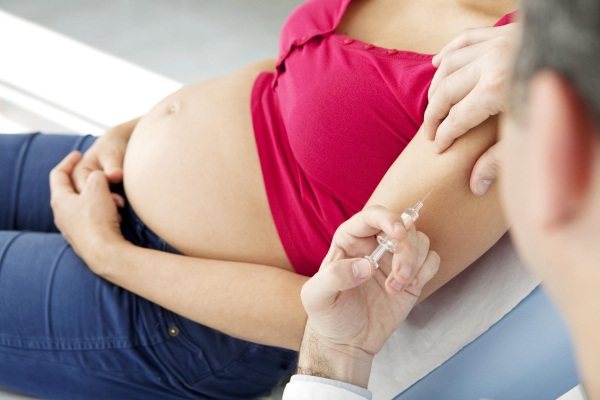
Vaccination with ADSM during pregnancy can lead to:
- in the early stages: to spontaneous miscarriage;
- in the later stages: to fetal death and non-developing pregnancy.
It should be noted that these situations occur quite rarely and the outcome of immunization largely depends on the woman’s condition.
Technique for administering ADSM vaccine to children
Often, on the eve of vaccination, mothers who bring their child for the first time for this procedure ask the question of where the ADSM vaccination is given. Considering that the components of the drug are released gradually, provoking the development of an immune response, it must be administered exclusively intramuscularly. If the vaccine gets into the subcutaneous tissue, it greatly reduces the absorption of components and reduces effectiveness. In this case, a lump forms at the injection site.
According to recommendations issued by WHO, the ADSM vaccine can be administered to:
- the outer surface of the shoulder at the border of the upper and middle third (placed on older children and adults);
- outer surface of the thigh (administered to infants);
- subscapular region (with a very pronounced fat layer in the hip and shoulder area).
Water procedures are allowed to be taken, regardless of the place of administration of the drug. Contraindications in this case may be:
- increased body temperature;
- deterioration in the child’s general well-being.
How is the vaccine tolerated and why is it dangerous?
Normally, all complications appear in the first 2 days after immunization. The vaccine recipient is often concerned about the injection site. It turns red and swells.
A small patient may experience vomiting and loose stools, moodiness and poor appetite. Parents should not panic and try to warm up the injection site. Ointment should also not be applied. This can cause an abscess.
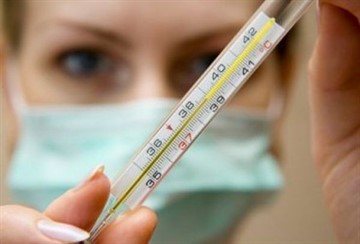
Among the common negative manifestations, the following should be noted:
- increased body temperature;
- general weakness;
- loss of appetite.
Severe complications are extremely rare (2 cases in 100,000). Among them:
- encephalitis and meningitis;
- anaphylactic shock;
- Quincke's edema.
On what day do they look for the reaction?
The tolerability of this vaccine is generally good and passes almost unnoticed for the vaccinator. The most important are the first 3 days. At this time, the temperature often rises to 37. This is not scary, and nothing needs to be done.

If you have a fever after vaccination, you can take paracetamol
If the thermometer is 39, you can take an antipyretic drug, for example, paracetamol. Just not Aspirin. An increase in temperature in this case is a normal response of the body to an introduced infection.
If alarming symptoms last longer (4-5 days), you should consult a doctor. It is important to remain under the supervision of a medical professional for the first half hour after vaccination, so you will avoid dangerous consequences. The injection site (the first 3 days) should not be wetted or combed.
Why are they betting?

You can get infected from both humans and animals. Both pathologies cause severe complications on the myocardium, mucous membrane and respiratory organs, affect the nervous system and have complex symptoms. Diseases are poorly treated even with very strong antibacterial medications.
But if vaccination is carried out on time and fully, these troubles can be avoided. Vaccination and revaccination are permissible for life; age is not a hindrance here, because tetanus and diphtheria can strike at any time.
